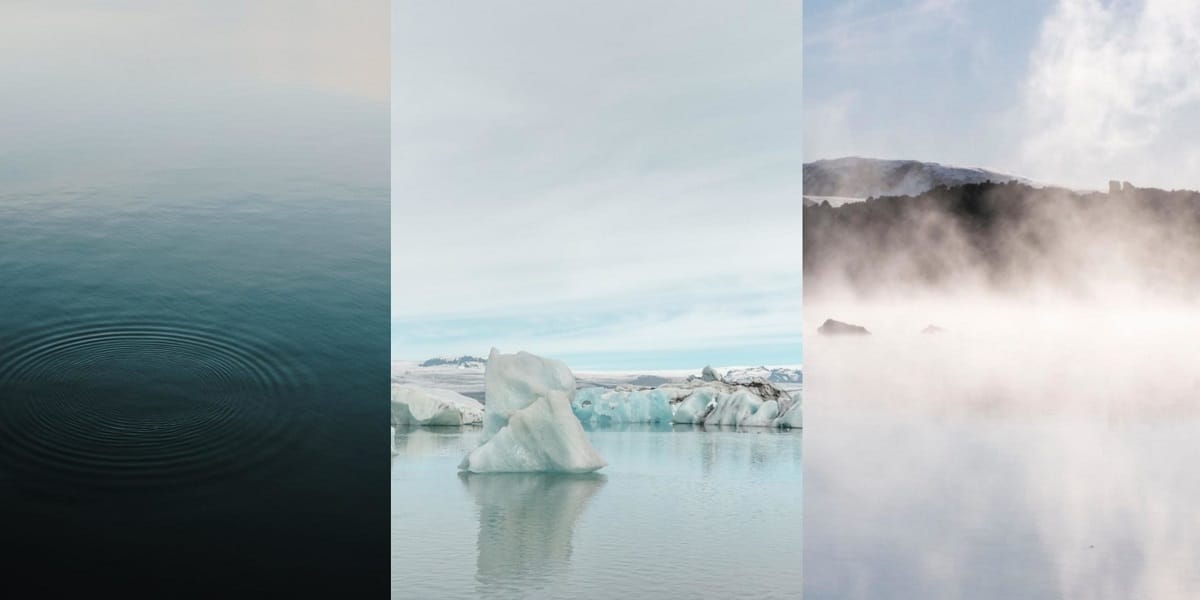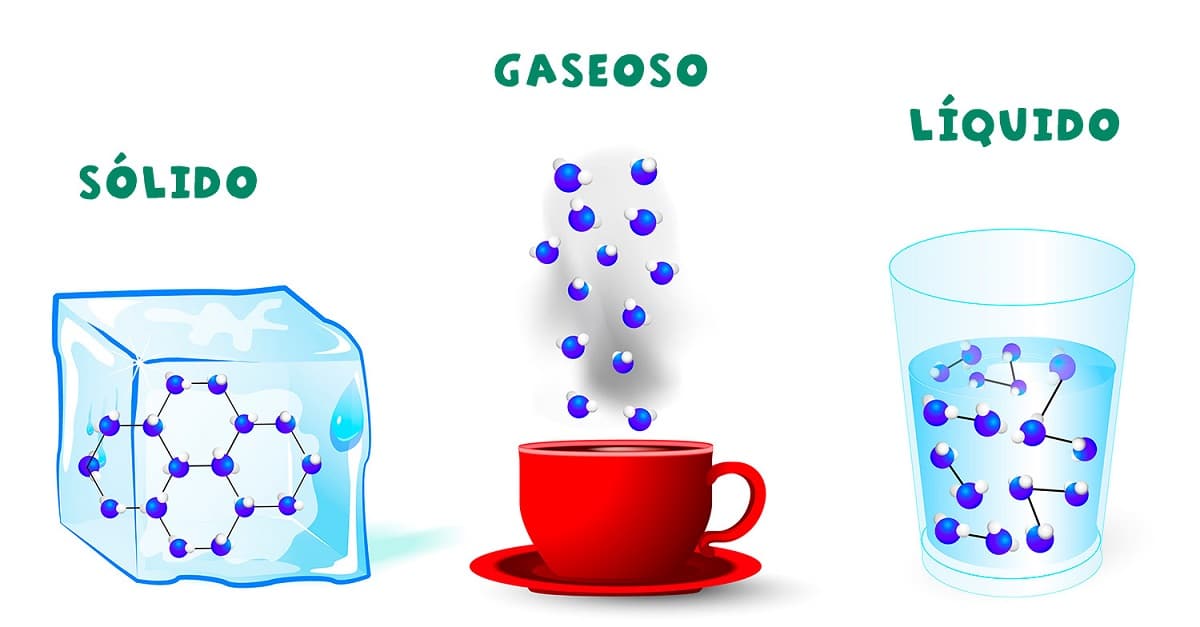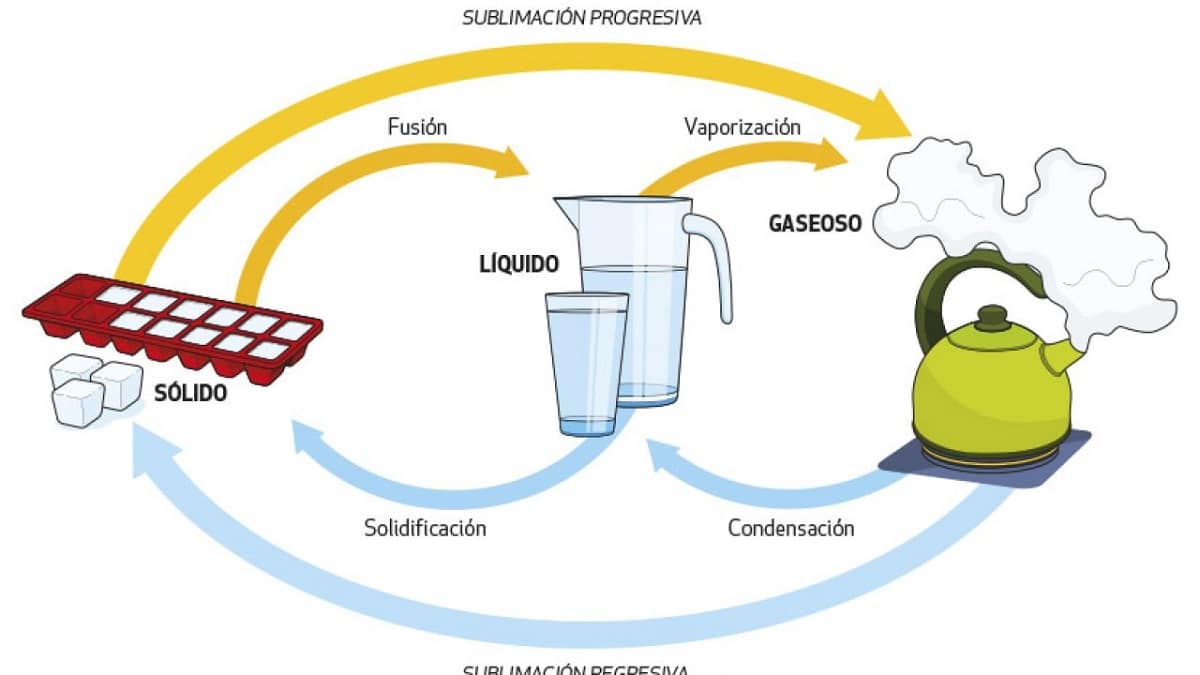
Water is the most precious resource of the human being and of all living beings on the planet. This resource is an element that is capable of being in different states naturally. The water states They are very important in the hydrological cycle to establish a universal continuous flow.
For this reason, we are going to dedicate this article to telling you what the main states of water are, what their characteristics are and the importance of each one of them.
water states

We all know what water is and we know its three forms, known as its physical states: liquid (water), solid (ice), and gaseous (steam). These are the three forms in which water can be found in nature without changing its chemical composition at all: H2O (hydrogen and oxygen).
The state of water depends on the pressure that surrounds it and the temperature to which it is exposed, that is, the environmental conditions. Therefore, by manipulating these conditions, liquid water can be converted to a solid or gaseous state and vice versa.
Given the importance of water for life and its abundance on Earth, your physical state is used as a reference in many measurement systems and therefore can be compared with other materials and substances.
water properties

Due to surface tension, insects and spiders can move in the water. Water is an odorless, colorless and tasteless substance with a neutral pH (7, neither acid nor alkaline). It is made up of two hydrogen atoms and one oxygen atom in each molecule.
Its particles have huge cohesive forces holding them together, so it has significant surface tension (which some insects use to "walk" on water) and requires a lot of energy to change its physical state.
Water is known as the “universal solvent” because it can dissolve more substances than any other liquid. In addition, it is an essential compound of life and is present in large quantities in all living organisms. Water covers two-thirds of the total area of our planet.
Different states of water and their characteristics
Liquid
In the liquid state, water is fluid and flexible. The state with which we are most associated is liquid, which is the densest and most incomprehensible state, and the most abundant on our planet. In its liquid state, the water particles are close together, but not too close together. Therefore, liquid water has the flexibility and fluidity of liquids, but loses its shape to take the shape of the container that contains it.
Therefore, liquid water requires certain conditions of energy (heat, temperature) and pressure. Water is a liquid at temperatures between 0 and 100º C and normal atmospheric pressure. However, if subjected to higher pressures (superheated water), it can exceed its boiling point and in the liquid state can reach a critical temperature of 374°C, the highest temperature at which a gas can liquefy. Liquid water is commonly found in oceans, lakes, rivers, and underground sediments, but it is also found inside living organisms.
Solid state
The solid state of water, often referred to as ice, It is achieved by reducing its temperature to 0°C or less. One of the oddities of frozen water is that it adds volume compared to the liquid form. That is, ice is less dense than water (which is why ice floats).
The appearance of ice is hard, brittle and transparent, and varies from white to blue, depending on the purity and thickness of the layer. Under some conditions, can temporarily remain in a semi-solid state called snow.
Solid water is commonly found in glaciers, mountain tops, permafrost (permafrost), and the outer planets of the solar system and in our food freezers.
Gaseous
The gaseous state of water, known as steam or water vapor, it is a common component of our atmosphere and is even present in every breath we take. At low pressure or high temperature, water evaporates and tends to rise because water vapor is less dense than air.
As long as one is at sea level (1 atmosphere), the transition to the gaseous state occurs at 100°C. Gaseous water forms the clouds we see in the sky, is in the air we breathe (especially our exhalation), and in the fog that appears on cold, humid days. If we put a pot of water to boil, we can also see it.
Changes in the state of the water

As we have seen in some of the previous cases, water can change from one state to another simply by changing its temperature conditions. This can be done in one direction or the other, and we'll give each different process its own name:
- Evaporation. The transition from liquid to gas increases the temperature of the water to 100°C. That is what happens with boiling water, which is why it is characterized by bubbling.
- Condensation. Transformation from gaseous to liquid by heat loss. This is what happens when water vapor condenses on a bathroom mirror: the mirror surface is cooler and the vapor deposited on it becomes liquid.
- Freezing. The transition from liquid to solid lowers the temperature of the water below 0°C. Water freezes, creating ice, as it does in our refrigerators or on mountain peaks.
- Melting: turns solid water into liquid, heat into ice. This process is common and can be seen when we add ice to a drink.
- Sublimation. The process of changing from a gaseous state to a solid state, in this case from water vapor directly to ice or snow. For this to happen, very specific conditions of temperature and pressure are needed, which is why this phenomenon occurs on the tops of mountains, for example, in the drought in Antarctica, where there is no liquid water.
- Reverse Sublimation: The direct conversion of a solid to a gas, that is, from ice to steam. We can see it in very dry environments, such as the polar tundra itself or the tops of mountains, where as solar radiation increases, most of the ice sublimates directly into gas without going through a liquid phase.
I hope that with this information you can learn more about the states of water and its characteristics.